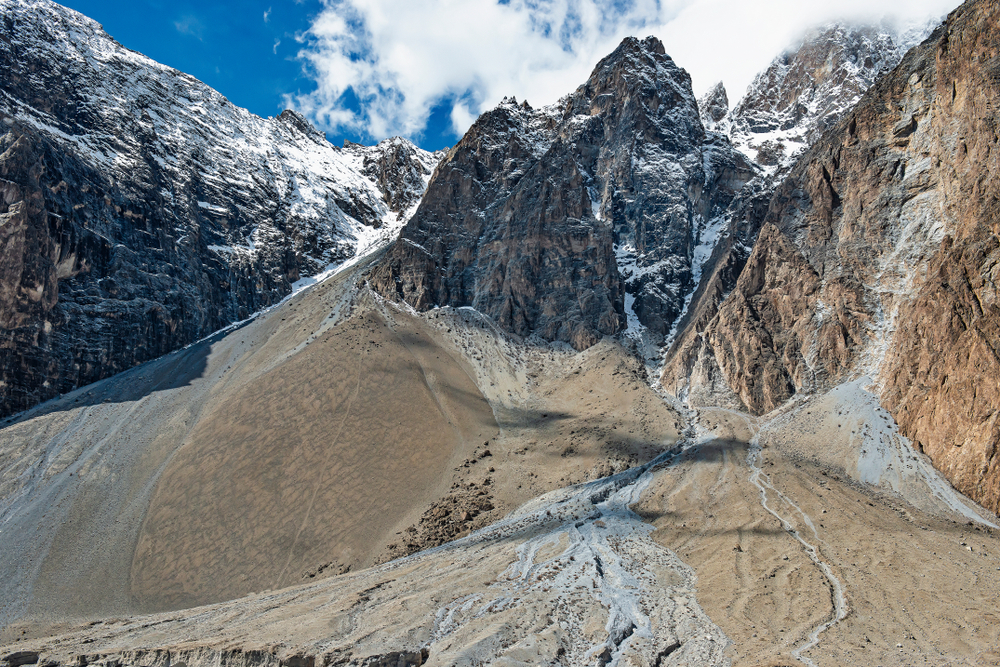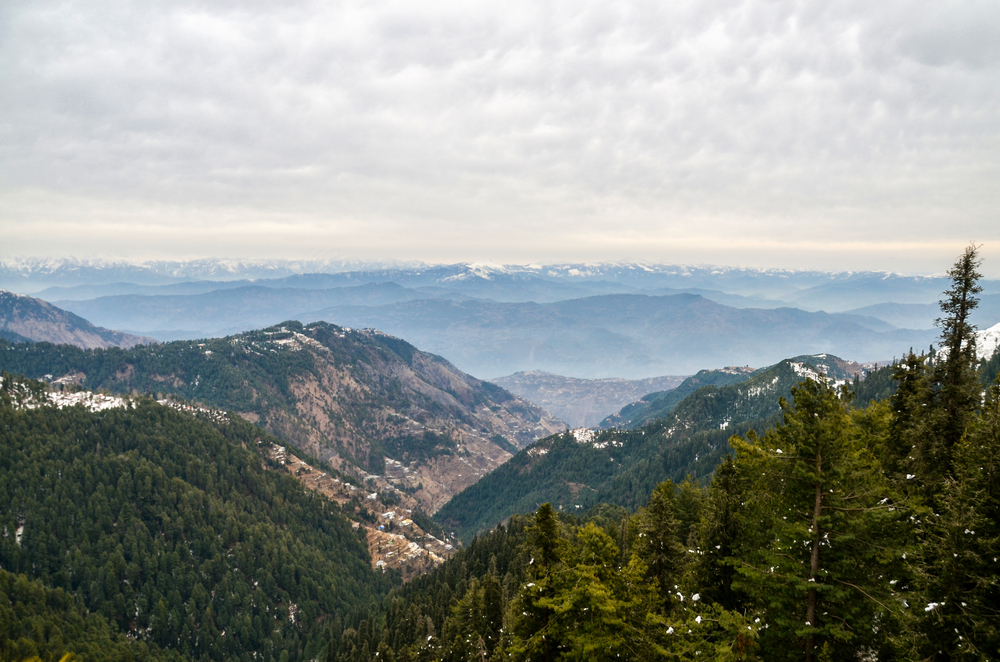Central Karakoram Overview
Central Karakoram National Park, known locally as مرکزی قراقرم نیشنل پارک, is located in the Gilgit-Baltistan region of northern Pakistan. Spanning approximately 3,600 square miles (9,000 square kilometers), it is the largest protected area in Pakistan.
The park encompasses some of the world’s highest peaks, including K2, the second-highest mountain on Earth at 28,251 feet (8,611 meters), along with Broad Peak, Gasherbrum I, and Gasherbrum II. The rugged landscape is dominated by immense glaciers, with the Baltoro, Biafo, and Hispar glaciers being some of the most prominent.
These vast ice formations carve through the terrain, creating deep valleys and dramatic ridges. The park’s terrain is a mix of steep mountain faces, high-altitude plateaus, and lush river valleys, providing an extreme yet stunning wilderness. Vegetation varies widely, from alpine meadows dotted with colorful wildflowers to sparse, high-altitude scrublands. In the lower valleys, juniper, birch, and willow trees can be found, offering a contrast to the rocky, icy expanses above.
The park is home to a remarkable diversity of wildlife, despite its harsh environment. Some of the most iconic species include the snow leopard, which roams the high altitudes in search of prey, and the Himalayan brown bear, which is critically endangered in the region.
Other mammals such as the ibex and the markhor, both species of wild goats with impressive, spiraled horns, inhabit the rugged cliffs and steep slopes. The park also shelters the Tibetan wolf and the lynx, both elusive predators that play crucial roles in the ecosystem.
Birdlife is abundant, with golden eagles and lammergeiers soaring high above the mountains, while Himalayan monals and snow partridges add flashes of color to the rocky slopes. Many of these species are highly adapted to the park’s extreme altitudes and cold climate, making their presence even more extraordinary.
Central Karakoram National Park is renowned for its awe-inspiring natural features and is a major destination for adventure seekers and nature enthusiasts. Mountaineers from across the world travel here to challenge themselves on K2 and other towering peaks.
The Baltoro Glacier trek, one of the most demanding but rewarding hikes in the world, offers breathtaking views of some of the highest mountains on Earth. The park’s extensive glacial systems provide opportunities for ice climbing, while its river valleys offer rugged trekking routes that pass through traditional Balti villages.
Beyond mountaineering and trekking, the park is a haven for scientific research, particularly in the study of climate change and glacial movements. Photographers and nature lovers also flock to the area to capture the raw, untouched beauty of the Karakoram range.
The park faces significant conservation challenges, primarily due to climate change and human encroachment. Glacial retreat is a growing concern, threatening both the natural landscape and the water supply for downstream communities. Overgrazing by livestock and deforestation in the lower valleys put pressure on native vegetation and increase the risk of soil erosion.
Illegal hunting remains a problem, despite conservation efforts aimed at protecting key species like the snow leopard and the markhor. However, there have been notable successes in conservation, with local and international organizations working together to promote sustainable tourism and wildlife protection. Community-based programs have been established to involve local populations in preserving the park’s natural heritage, ensuring that conservation efforts benefit both the environment and the people who rely on it.












































































